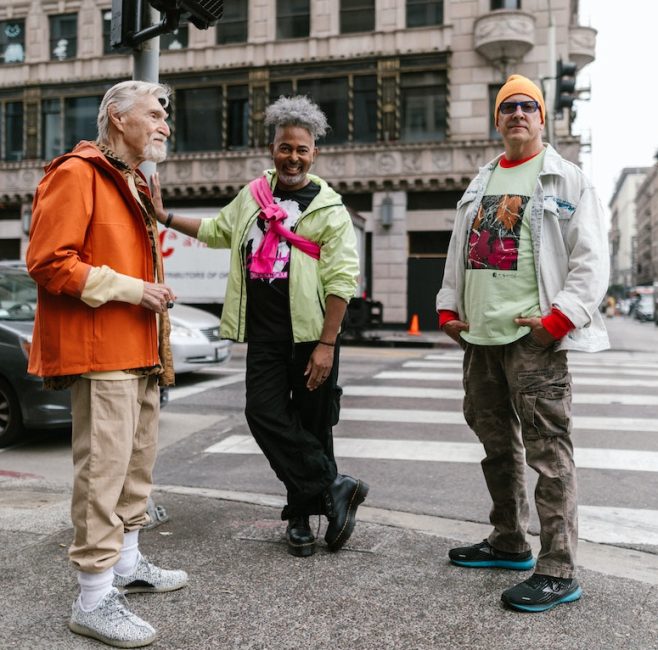Ageing cities
The figures speak for themselves: while there were one billion people over the age of 60 in 2020, there will be two billion in 2050. Combined with continuing rapid urbanisation (55% of the population today, 68% in 2050), this figure raises the question of whether cities will be able to ensure that older people can live there in a dignified way. The question is all the more crucial as this transformation is happening fast, particularly in developing countries. In France, it took 150 years for the population aged over 60 to increase from 10 to 20%. In Brazil, China and India, this transition will happen in just over 20 years. It’s a huge challenge, but the city now has the arguments to respond. A recent study from Eurostat shows that elderly people living in cities have better health status than their rural counterparts.
Transform the city globally
Building an age-friendly city calls for a systemic response, from town planning to transport, as well as housing, social inclusion, employment, health services and community life. As part of its Global Network of Age-friendly Cities and Communities, the WHO has developed a checklist designed for decision-makers which provides a comprehensive overview of the essential issues. From the pavement quality to transport signage, plus access to care services and the respect and social inclusion of the elderly, the issue touches all urban policies.
Compact cities
The Japanese city of Toyama, which has a population of 415,000, wonderfully embodies the virtues of a global response to the issue of urban ageing. Driven by Masashi Mori, who was the city’s charismatic mayor until 2021, this policy comes to life in the creation of a “compact city,” which is reminiscent of the famous “15-minute city” which Paris strives to be. Thanks to economic incentives, the development of Residential Encouragement Zones can help attract elderly people who tend to stay in suburban areas to more densely populated areas, and thus concentrate services over a smaller surface area. When it comes to transport, creating an efficient tram network designed to be accessible constitutes the backbone of the initiative. Schools have been transformed into health care centres for the elderly, while rural areas around the city benefit from dedicated home care services.
Intergenerational cohesion
One of the central problems of the ageing city today remains loneliness and social isolation amongst older people. As such, intergenerational housing provides a certain number of answers. Initiatives like Colette in France or Tandems in Luxembourg and Spain offer intergenerational co-living services which aims to combat social isolation amongst the elderly and the financial fragility experienced by younger people. In Cleveland, the Judson Manor retirement home hosts residencies for young musicians free of charge, in exchange for a certain number of concerts per year. Meanwhile in Langres, France, the 3 Margelles senior living facility combines intergenerational housing with social housing, while preserving an unoccupied historical building. Located in a building belonging to the Sœurs de la Providence religious community, the project now welcomes pensioners, single mothers and young people experiencing social disruption. With these kinds of projects, it’s important they don’t fall into a form of “gerontocracy,” where young precarious workers are placed at the service of the elderly.
Age-tech helping cities?
New technology is also tempted to provide solutions for a city more accessible to older people. When it comes to hardware solutions, the Japanese startup LifeHub is developing a wheelchair that can climb stairs and put the user in a standing position, making it easier to do simple tasks like operating a ticket machine. As for boosting communication, AI can come in pretty handy: take Clova CareCall in South Korea, whose phone call check-up service allows older people to have a daily conversation… with a computer. In China, the government-backed Smart Eldercare should provide the most isolated people with access to care. The intelligent use of data can also be used to create cities designed with the elderly in mind. This is the aim behind the European URBANAGE project, which is looking to use analytics, data visualisation, predictive algorithms and simulation technology solutions through “local digital twins” to understand the impact on older residents. The project has already been used to develop an Age Friendly Route Planner which outlines routes adapted to seniors, or an Age Friendliness Index which measures how well adapted different neighbourhoods are for older generations, while also setting up a participatory database on the subject.
From urban planning to technology and transport, the city still has a way to go to adapt to older peoples’ needs. However, dividing urban populations into “age groups” remains a risky approach, for it doesn’t allow us to take into account the systemic dimension of urban dynamics.



